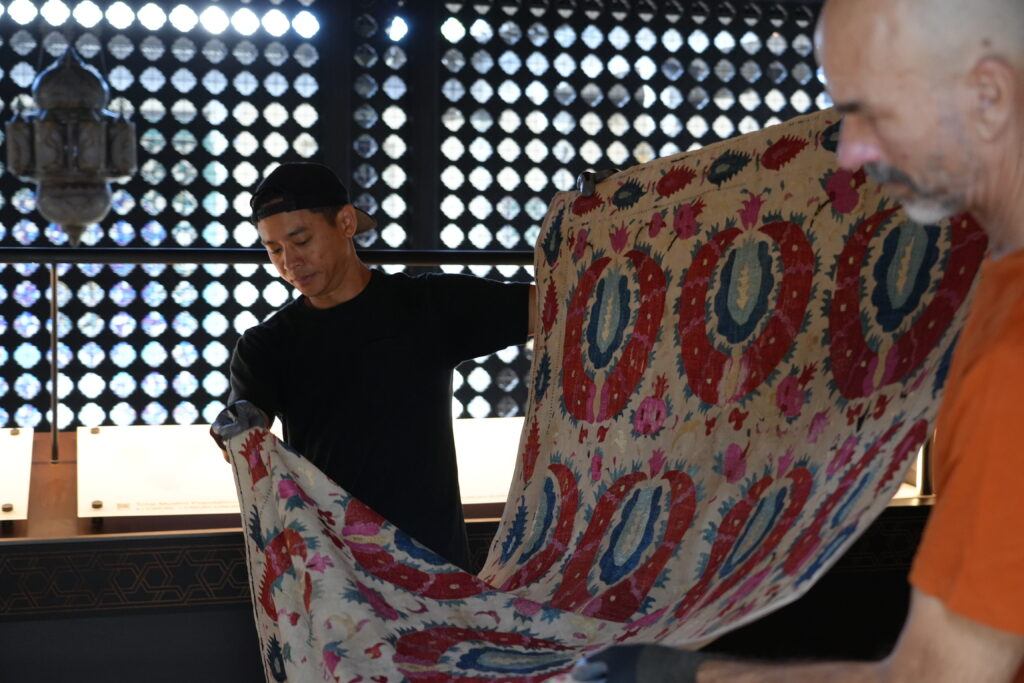Rotating Threads

Imagine strolling through Shangri La, only to find that the two vibrant Ottoman period textiles you admired last visit have vanished and have been replaced by an equally exquisite print from our Artist-In-Residence, Sandra Saenz. What’s the story behind this artwork swap? The answer lies in the delicate balance between artwork preservation and a home-turned-open-air–museum. Here at Shangri La, our historic textiles get to show off their splendor for about 3-6 months before they’re gently ushered back into hibernation (AKA collections storage). “But why such a short timeframe?” you ask.
Our favorite Galleries & Collections Coordinator, Jeremy Pang has the answer! “The frequency of rotations hinges on factors that vary from the fragility of the textile, environmental conditions, and the ever-watchful eye of conservation requirements.” said Pang. Because Shangri La is an open-air museum, our Collections team has to be aware of environmental factors like salt air, dust, light, and…animal surprises that could impact the collection. If you’re wondering what “rotations” means, it’s the museum industry word to describe the swap between the current artwork on-view and the artwork that’s lined-up to be shown next.
With the help of our Consulting Art Handler, Keith Yurdana, Jeremy carefully removes the hanging textiles from their fixtures in Shangri La’s Introductory gallery. De-installation (the word we use in the field to describe taking artwork off-view) is followed by a cleaning of the textile before it is rolled, covered in archival Tyveck and put away into storage.
Shangri La has a textile collection ranging from North Africa to Southeast Asia, with artwork getting its 15 minutes of fame… or rather 3-6 months.
So, next time you step into Shangri La, know that the textiles you see are just a glimpse into a much larger collection.
You can see more amazing textiles from our collection online here! These wallflowers don’t go through the same rotation schedule as textiles IRL!
